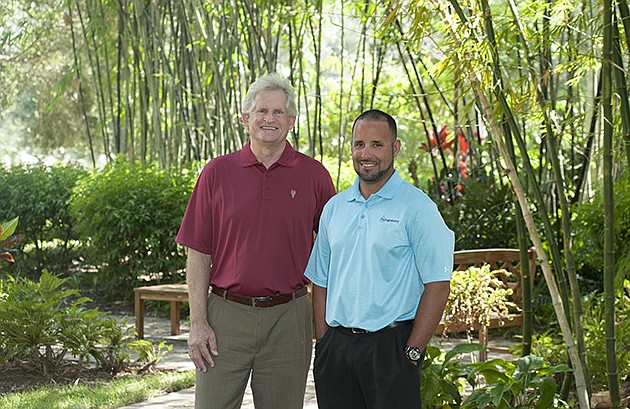- November 24, 2024
-
-
Loading

Loading

Golf courses are known for their greens. Not for being green.
In fact, golf courses often get a bad rap for things such as water consumption or fertilizer and pesticide use.
Venice Golf and Country Club wants to be a different kind of course. Over the past decade or so, the private club has undertaken a variety of efforts to increase its environmental friendliness. And a recently completed $2.5 million renovation of its golf course boosted that strategy. It includes the installation of a $1.7 million, state-of-the-art irrigation system.
“Our members love being environmental stewards, and from that it just grows and expands,” says Jim Schell, general manager of Venice Golf and Country Club. “The technology that's been introduced here is really helping us continue to save resources and to have a positive impact on the surroundings.”
The strategy is good for business, too, providing the club with savings on energy, labor and chemical costs. And by helping the club detect and resolve turf issues before they become evident to players, the new technology keeps members satisfied with course conditions. The strategy is also counterintuitive in that several other golf courses, given the industry decline, aren't in high investment mode. “Aesthetics have a great impact on the satisfaction of our golfers,” says Schell.
On the course, changes start with the new irrigation system that allows the club to individually control each sprinkler head. Data it collects on metrics such as moisture levels provide information to decide on when to water.
“Instead of having someone making decisions based on what they feel, it's science based,” says course superintendent Carlos Arraya. “The golf course is an expense to the club, so we focus on efficiency. And the better way to do that is through technology.”
Because the club now has the capability to water only the areas that need it, it's already seen a 30% reduction in water output from the new irrigation system. Arraya sees the potential to increase that number to 50%. “And there's energy savings involved in that as well,” he says, anticipating a 40% reduction annually in electricity use, which translates to about $15,000. “Plus with the right amount of moisture you have a better plant with less stress, and less stress means less chemicals. The irrigation system was an investment, but over time it will pay for itself.”
The club has also begun to use radar detection to monitor the health of its turf. Readings of satellite images can pinpoint areas that are stressed. This helps the club make watering and mowing decisions and catch pest or disease outbreaks at an early stage.
With this data, the club can focus its efforts just on spots that need it, rather than applying a fungicide, pesticide or fertilizer to the whole course when it's not necessary in most areas.
This in turn helps the 120-acre course save money on chemicals and the labor needed to apply them. The radar technology costs $1,500 for an annual subscription; a single fungicide application costs about the same amount.
“I like to think of it all as our medical file on the golf course,” says Arraya. “Environmental issues are usually really centralized in certain areas. Because we're such defensive creatures, we want to just protect everything. But we're trying to be ahead of the game.”
For its efforts, Venice Golf and Country Club is one of a handful of courses nationwide to earn the GEO Certified label from the Golf Environment Organization, an international nonprofit. Schell and Arraya also get frequent calls from other country clubs and course superintendents interested in doing similar work.
“When you start measuring things, you recognize opportunities,” says Schell. “And those opportunities are the ones we can take advantage of. By reducing inputs and purchases, you're reducing the amount of money that you're spending. And to help us survive into the future, we need to establish ourself as a sustainable business.”